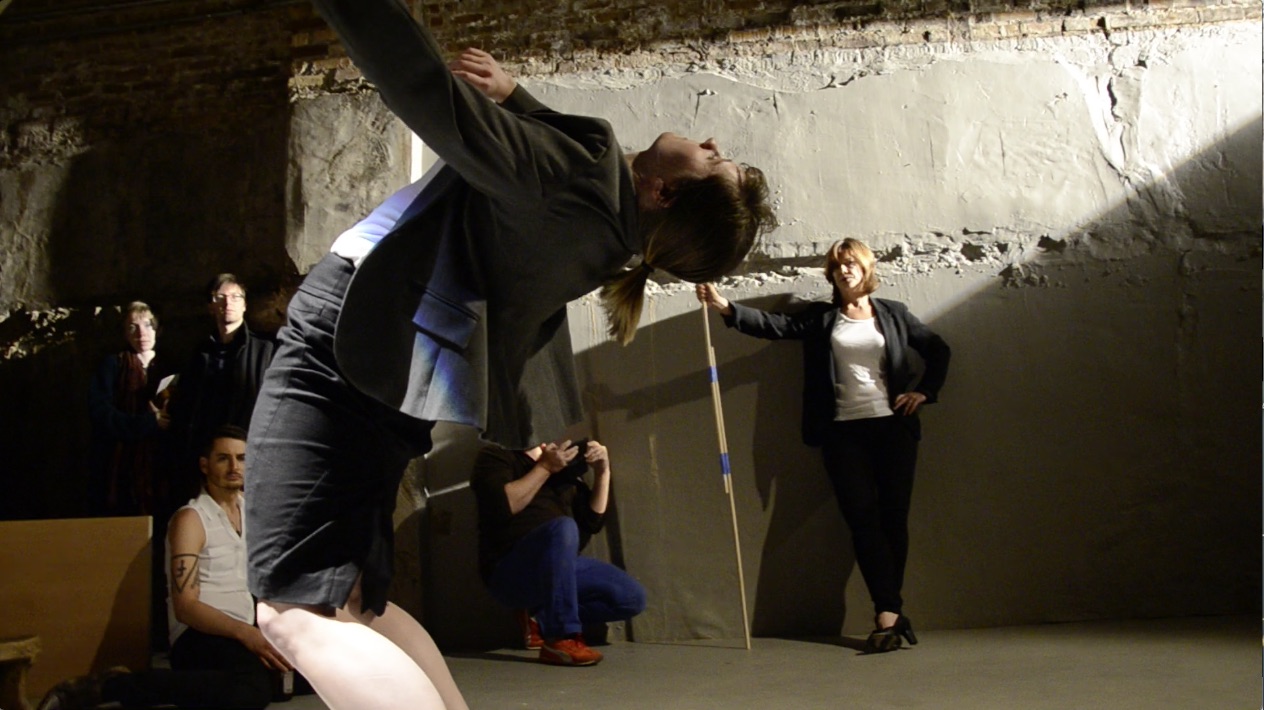CHICAGO —I’ve been told by lay dancers many a time that I shouldn’t call myself a choreographer, that they respect that word too much to use it in such a vulgar way, without the force of some verisimilitude beyond the immediacy of composing movement in the imagination. I don’t agree, of course. But as an artist, this sort of disciplinary bigotry has weighed on me in a profound way for a very long time, this distance between what is allowed and what is accepted (and not), and how those things dictate what we count as art.
It’s why, years ago, I walked away from the “art world.” It’s a decision that I continue to be proud of myself for making, and sticking to. So you can imagine how, closing out the performances of “Propositional Worlds” a few weeks back at the Museum of Contemporary Art’s new Commons space under the direction of recently-appointed curator January Parkos-Arnall and presenting partner SITE/less — the new dance and performance art theatre opened by Zephyr dance’s Michelle Kranicke and architect David Sundry — I found myself reflecting on an arc of ideas that I hadn’t previously thought of as connected.
As a specially-designated space at museum intended for “public engagement,” it seemed an appropriate place to present the work, and allow it to retain its social context. It also was useful as a way to harken back, as an event focused on the presentation of “performance scores,” to an instructional form with deep roots in art history. Importantly, however, while these works reference the Fluxus movement and Minimalism’s Sol Lewitt, it’s also not restricted to them, and also encompasses political and philosophical thinkers who “blurred art and life through performance scores, directions, and instructions such as Pauline Oliveros, Lygia Clark, Allan Kaprow, ACT UP, Fluxus, the Diggers, Saul Alinsky, belle hooks and many more,” as Elana Mann, my co-presenter at the MCA, wrote. With co-editor John Burtle, she edited the performance scorebook anthology, Propositional Attitudes, in which they’d included my work.

For me, as a writer already grappling with notions dance notation and other written approaches, it seemed a form readily adaptable to choreographic interpretations. For several years, in fact, among the various other art-making I have pursued while tracing dance’s forms, my work has revolved around these notions of instructional, interactionist and art action approaches, and to what social, poetic, and other uses they may be applied. I’ve written dozens of them and, over the years, have sought to find support for efforts to stage them across our city’s dance and performance art communities.
Interestingly, over the course of thinking through the curatorial substance of this program, it occurred to me I’d encountered a kind of Midwestern artistic chasm. In conversations with Mann, she pointed out to me that the Getty in Los Angeles had established a Fluxus archive in which social practice derivations of performance scoring figure prominently. They’d not yet figured prominently as a source of written choreography, which is what I believed was my innovation, and that it allowed for an as-yet unexplored greater immediacy of social engagement as dance.
Yes, this excited me. Not strictly, either, as a matter of scholarship. I had no immediate idea as to why this made sense, and that was the tether that drew me forward. It seemed to me as though this shift in artistic premise wasn’t one, for me, restricted to any such conclusion of the dance and performance art worlds, or any kind of tribalist gate-keeping dictated by power structures far more rooted in fostering art as unrestricted asset class than as demonstrative of human inquiry as a kind of truth in knowing — the former of which is a situation I am, in recent months, more and more convinced will eventually be rightly addressed by long overdue government regulation. But dance and performance art, and later social practices as art were originated in the heart of a 1960s dematerialization movement that, as a reaction against commodification and appropriation, by some rot of nature, hasn’t yet reckoned with in the art world’s present and historical struggles with endless magnetization of the needle toward monetization.
It’s the reason I said goodbye to all that, which I believe any artist worth their salt should do eventually anyway. But herein, my complaint: in the context of dance and performance, shouldn’t we be vying for big ideas, breaking down the boundaries, stretching the furthest, and not simply falling in line behind market dictates?
Patronage, grant recognition and “bodies in the room” (read: ticket sales) can’t be the only reason we do these things we do. I recall reading in the Washington Post recently, by way of parallel, how Germany’s Angela Merkel lost the support of vast sections of her voting electorate for allowing nearly a million refugees into the country last year. The unpopularity of her decision was a significant factor, the Post writer posited, in the loss of her chancellorship — but it was the right thing to do. I agree. Similarly, how important is it that artistic innovation risk losing some audience numbers and grant dollars along the way to also retrench into an expansiveness of forms, a willingness to look beyond the myopia of what is considered legitimate art and what is not?
Header image: Michelle Kranicke and Molly Fe Strom performing Robby Herbst’s “New New Games, (11) Flexible Individual Neo-liberal Limbo.” Videography by Jessica Louise Siletzky.
